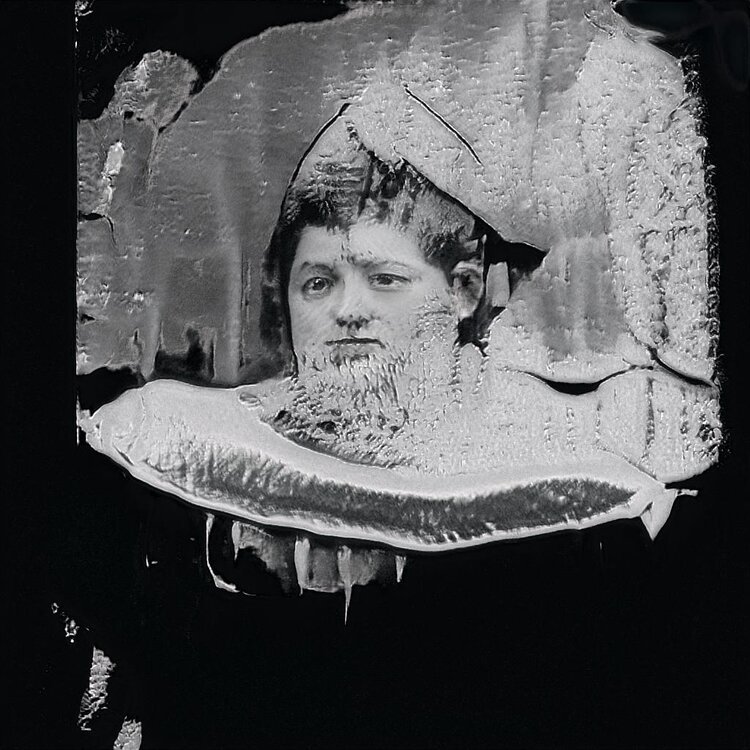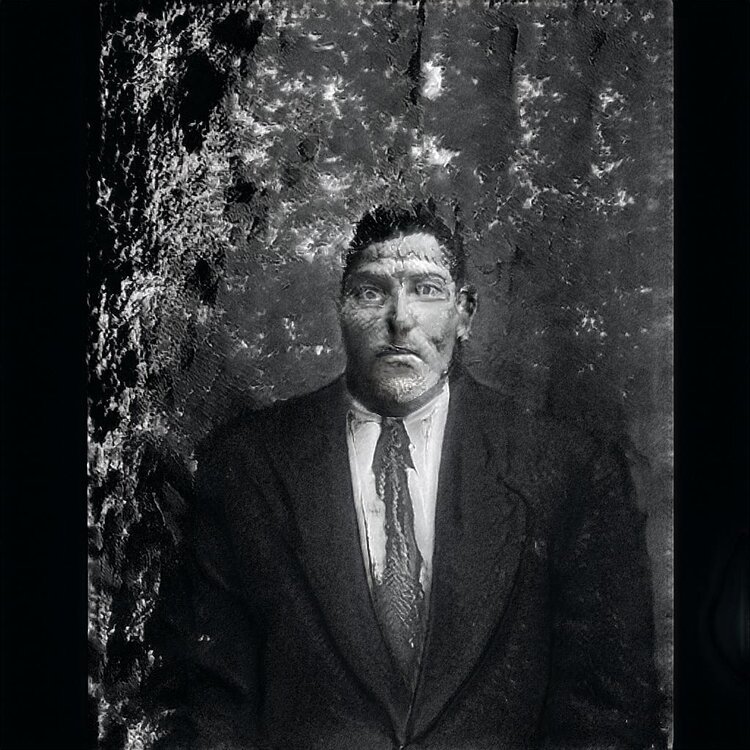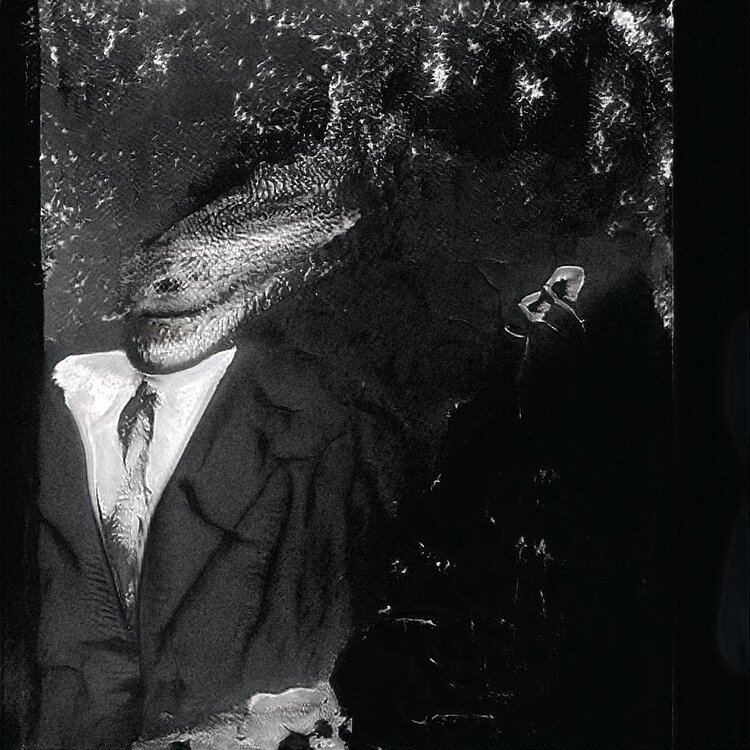Costica Ascinte Dataset (2019)
Just after running a speculative design workshop and mini-conference on death, digital memory & AI in 2019, I was given a chance to train my own #GAN image model thanks to RunwayML. I wanted to do something that would explore relationships between the reproduction and loss of memory, so I trained a dataset with disintegrating portraiture photographs from early 20th century Romanian photographer Costică Acsinte.
Costică Acsinte ran a photographic studio, and all of his portraits are now in the public domain. But the photographs were only archived after a long period of neglect, and so they’re incredibly damaged: warped by mold, torn, or burned. (To see images of Ascinte's work, you can find them online here.)
Here’s an original example.
An original, archived portrait image by Costică Acsinte.
To make use of Machine Learning, you have to make a lot of assumptions about the world. One of those assumptions is that the data we keep is “clean.” We clean data for the sake of the machines, and when we do that, we often cut out the inconvenient realities. In the case of the Ascinte dataset, I wanted to build a model that kept “imperfections” in the data. Photographic decay has always fascinated me as a metaphor for time, and the disintegration of our connection to the past.
The work is also a bit of a nod to one of my favorite films of all time: Decasia, by Bill Morrison. Decasia is made of reassembled film reels that Morrison tracked down from warehouses, where characters in old forgotten silent films interact with the damage on the celluloid. Interesting to think about the gaps and leaps in our data and what machine learning has to make of it.
To build the dataset, I downloaded the full archive from Flickr and sorted them into seated portraits and standing portraits. Each data set was then duplicated with a horizontal rotation to increase the training data.
This model generates new variations of those images, in various states of decay, in which portrait models are seated. The model also includes scans of completely destroyed photographs from the collection. I created this model as a way to explore creative output from damaged materials. It generates exciting, surreal portraits and abstract textures of mold and disintegrating film.
The results seem like drawings, not photographs, but they blend the eerie and cartoonish in a way that I find really interesting, regardless of their distance from perfect technical reproductions of the originals.
A sample of the outputs is below.
Anyway, I have shared this one on RunwayML so you can try it out on your own. If you make something interesting with this model, please let me know by email or on twitter (@e_salvaggio).













